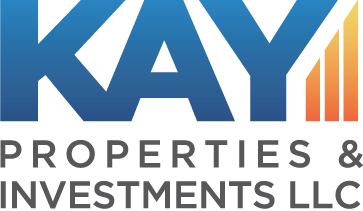Owning your own home can be a good investment for a number of reasons, but it’s not the same as owning income properties, which have the potential to produce cash income on a regular monthly basis. Consider the range of potential ways to invest in real estate for income.
Please view Kiplinger article here.
By Dwight Kay, CEO & Founder, Kay Properties & Investments, LLC
Earlier this year, the homeownership rate in the U.S. hit a post-Great Recession high, reaching about 68%, according to the U.S. Department of Commerce. Despite the pandemic (or maybe because of it), the housing market remains relatively strong. Low interest rates have helped the sector, including by allowing people to refinance their mortgages and save money every month.
While homeownership is a significant contributor to Americans’ wealth, it’s no substitute for the potential benefits of investment real estate. Investment properties may appreciate in value — like your residence — but also potentially generate monthly income while you own them — unlike your home.
Income-generation is a key reason many people diversify* their investment portfolios to include different types of commercial, net-lease, self-storage, medical and multifamily real estate assets. And who wouldn’t benefit from additional monthly income? Certainly, retirees or near-retirees would, as would most other people. Additional monthly rental income can be used to support living costs, be reinvested or be saved.
Real estate investments that are cash-flow positive will potentially generate monthly income for investors. Notably, many real estate investments are predictable and durable in their ability to generate monthly income — although rental income is never guaranteed as real estate is not a bond but a living, breathing asset. During the pandemic some assets are performing particularly well, such as leased properties occupied by essential businesses, including drugstores, medical services and shipping company industrial distribution facilities that deliver products purchased through e-commerce.
Diversification is another reason to consider investment real estate, because the performance of privately owned real estate assets typically does not correlate with the market for publicly traded stocks and bonds. In other words, investment real estate is a potential hedge against the volatility of the equities market, a goal that we have found many investors are keenly interested in.
There are multiple ways to participate in the investment real estate market in pursuit of income and appreciation. Here’s a look at four ways to invest in real estate with income potential
Real Estate Investment Trusts (REITs)
The market for publicly traded REITs is well established, and many people access the market through their retirement plans and stock brokerage accounts. REITs are typically companies that own and operate real estate, so you’re investing in the company, not just the underlying real estate. REITs pay out their income in the form of dividends, which are taxable.
The biggest downside to REIT investments (aside from their high correlation to the overall stock market and the volatility it ensues) is the absence of the ability to take advantage of a 1031 exchange — and thus defer taxation — on any capital gains from the sale of shares.
Example: Bob has invested $100,000 in a REIT that owns shopping centers. There is no monthly income provided by the REIT, but every quarter the company pays out the majority of its earnings, if any, in the form of dividends. The dividends are taxable as ordinary income. When Bob sells his shares, if there is a gain he will pay capital gains tax on the gain.
Direct Ownership of Triple-Net Leased Property
Triple-net leased properties are typically retail, medical or industrial facilities occupied by a single tenant. With a property of this type, the tenant — not the owner — is responsible for the majority, if not all, of the maintenance, taxes and insurance expenses related to the real estate. While these benefits can be potentially attractive, direct ownership of such properties comes with distinct downsides, starting with concentration risk if an investor places a large portion of their net worth into a single property with one tenant. Other risks are potential exposure to a black swan event, such as COVID-19, if the tenant turns out to be hard hit, and management risk. I have owned dozens of triple-net properties over my career and they are anything but passive … they require intensive asset management to properly operate them.
Example: Ellen has purchased a small medical office building for $1.5 million. The building is occupied by a radiology company. Even though the tenant pays the majority of the building’s operating expenses, Ellen as the sole owner is responsible for working with the tenant to collect reimbursable expenses that she paid, working with the tenant on any rent relief requested in situations like the Covid 19 shutdown, negotiating with the tenant any lease renewals and many other items. Income from the property, if any, is taxable although she will be able to utilize depreciation deductions to shelter a portion of it. When Ellen sells the building, if there is a gain, she can defer taxes if she reinvests the gain into another investment property utilizing a 1031 exchange. A potential negative for Ellen is that oftentimes the $1.5 million she paid for the building will be a large portion of her overall net worth thereby exposing her to overconcentration risk.
Delaware Statutory Trusts (DSTs)
A DST is an entity used to hold title to investments such as income-producing real estate. Most types of real estate can be owned in a DST, including industrial, multifamily, self-storage, medical and retail properties. Often, the properties are institutional quality similar to those owned by an insurance company or pension fund, such as a 500-unit Class A multifamily apartment community or a 50,000-square-foot industrial distribution facility subject to a 10- to 15-year net lease with an investment grade rated Fortune 500 logistics and shipping company. The asset manager (aka DST sponsor company) takes care of the property day to day and handles all investor reporting and monthly distributions.
DST investments are used by those investors seeking a cash investment with a typical minimum of $25,000, as well as those seeking a turnkey 1031 tax-deferred exchange solution.
Example: Richard has invested $100,000 in a DST that owns a $10-million industrial property occupied by a Fortune 500 shipping company. Every month the sponsor distributes Richard’s share of the monthly income, if any, to him in cash. The income is taxable, however partially sheltered via deductions. When the property is sold, Richard can defer taxes on any gain if he reinvests the gain into another investment property or DST via a 1031 tax-deferred exchange.
Tenants-in-Common Properties (TICs)
A TIC structure is another way to co-invest in real estate. With a TIC, you own a fractional interest in the property and receive a pro rata portion of the potential income and appreciation of the real estate. As a TIC investor you will typically be given the opportunity to vote on major issues at the property, such as whether to sign a new lease, refinance the mortgage and sell the property.
Although TIC investments and DSTs have their nuances and differences, they often will hold title to the same types of property. While the DST is generally considered the more passive investment vehicle, there are some circumstances in which a TIC is desirable, including if the investors wish to utilize a cash-out refinance after owning the TIC investment for a few years in order to get a large portion of their equity back, which can be invested in other assets. Both DSTs and TICs qualify for 1031 exchange tax treatment, which allows capital gains tax to be deferred if the gains are reinvested in other investment properties, and both structures are used by direct cash investors seeking diversification out of the stock market.
Example: Fallon has invested $100,000 in a TIC structure that owns and operates a 98-unit multifamily apartment building. Every month the TIC sponsor distributes Fallon’s share of the monthly income, if any, to her in cash. The income is taxable but again is able to be partially sheltered via deductions. When the TIC property is sold, Fallon can defer taxes on any gain if she reinvests the gain into another investment property.
Bottom line: Investing in income properties provides diversification to a stock- or bond-heavy investment portfolio, and it also offers the potential for income in addition to appreciation and, last but not least, some welcome tax advantages to shelter rental income and defer capital gains taxes.
*Diversification does not guarantee profits or protect against losses.
